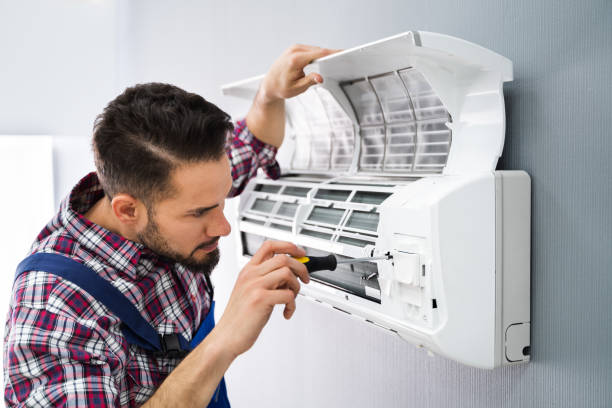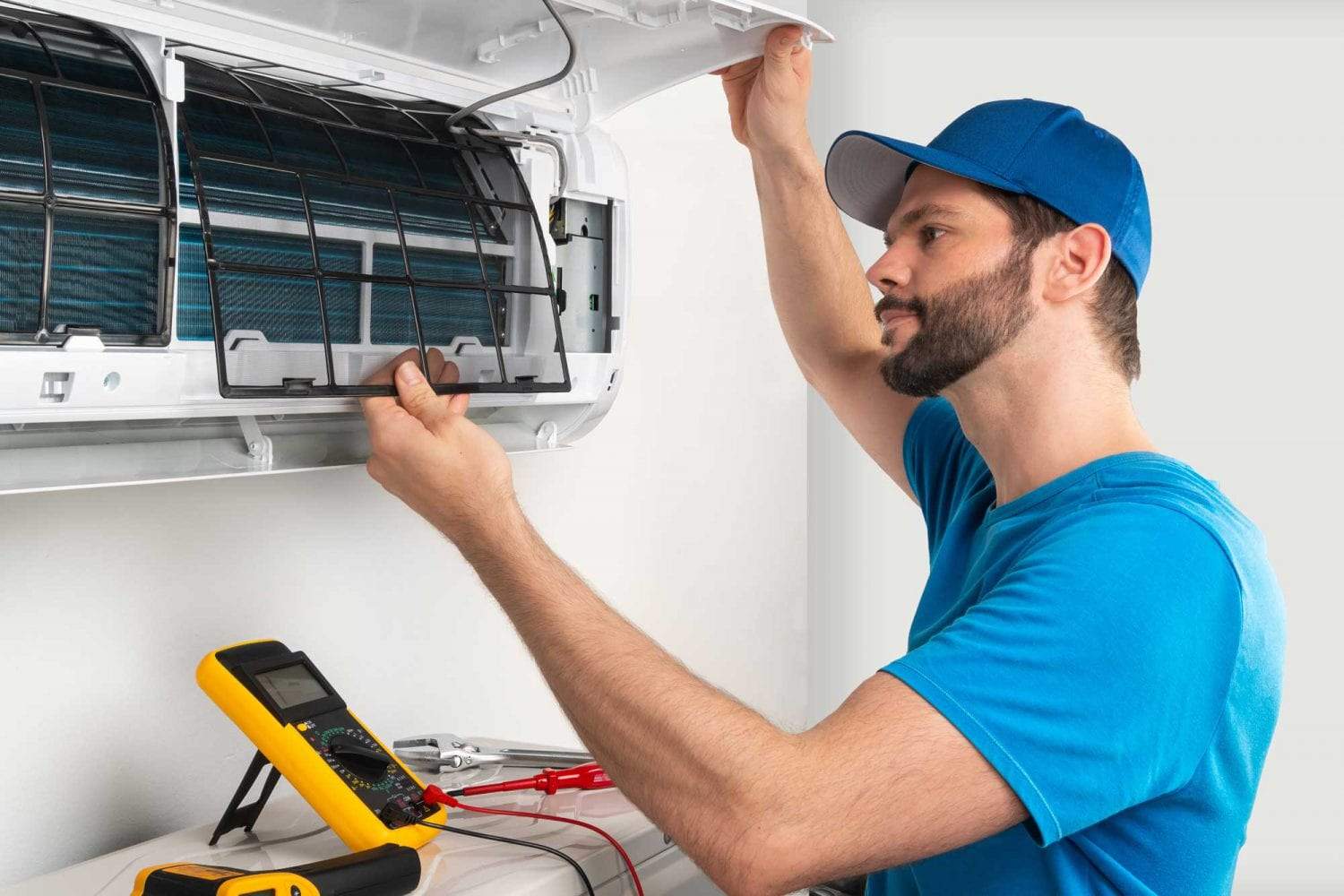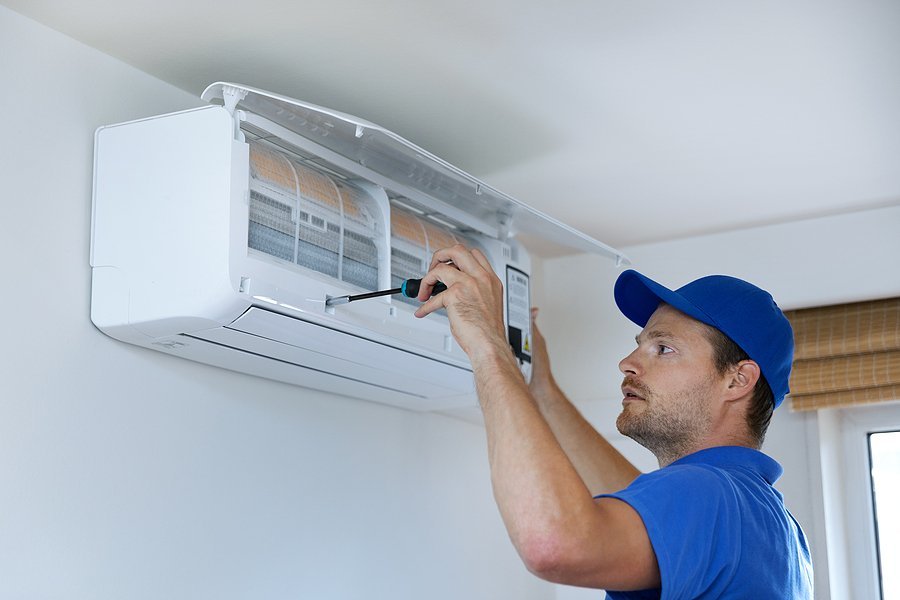Fix Air Conditioner: Effective Climate Control Systems Are Essential For Indoor Convenience And Energy Savings
Parts and Systems: The A/c Symphony
Ever wonder what genuinely manages the climate control in your home or workplace? It's much more than just a box humming exterior. We're talking about a sophisticated interplay of parts, a veritable symphony of engineering designed to maintain your convenience, come rain or shine, or perhaps the most blistering heatwave. Understanding these individual parts, and how they coalesce into a unified system, is vital for any property owner or center supervisor. Consider it like a body: each organ has an essential role, however it's their cumulative function that keeps us alive and growing.
The Core Players: What Makes it Tick?

At the heart of many residential and light business HVAC setups, you'll discover numerous crucial players. Do you actually know what every one does? Let's break down the important cast:
- Furnace: The heating powerhouse, usually fueled by natural gas, propane, or electrical power. It warms the air that then flows throughout your area.
- Air conditioning system: The cooling champion, removing heat and humidity from indoor air through a refrigerant cycle.
- Ductwork: The circulatory system of your a/c, a network of channels that distributes conditioned air to various spaces and returns stagnant air for reconditioning. Without effectively sized and sealed ducts, even the most efficient unit can fail.
- Thermostat: The brain of the operation, enabling you to set and keep preferred temperature levels. Modern thermostats are capable of amazing tasks, from Wi-Fi connection to learning your preferences.
Beyond the Basics: Integrated Systems
While the heating system and ac system are frequently distinct systems, they regularly share common elements, forming an integrated system. For instance, the very same blower fan within the furnace frequently moves air for both heating and cooling. This smooth combination is what makes a contemporary heating and cooling system so effective and easy to use. Think about the timeless scenario: a sweltering summer day provides method to a surprisingly chilly night. Your system, if correctly developed, shifts effortlessly from cooling to heating, ensuring continuous convenience without you raising a finger. It's truly a marvel of contemporary convenience technology.
Improving Air Quality: More Than Simply Temperature
Beyond simply heating and cooling, modern HVAC services frequently incorporate components aimed at enhancing indoor air quality. Are you mindful of the unnoticeable dangers hiding in your air? From allergens to contaminants, a great system actively fights them. This can consist of innovative filtration systems, humidifiers to include wetness in dry climates, or dehumidifiers to draw out excess humidity. Some systems even incorporate UV lamps to eliminate air-borne pathogens. It's about creating a holistic environment, not just a comfortable temperature. After all, what good is comfort if the air you breathe is subpar?
Cooling And Heating Concepts: The Unseen Ballet of Convenience
Ever question why one room feels like a sauna while the next is an icebox, regardless of your thermostat's impassioned prayers? The answer frequently lies in a nuanced understanding of heating and cooling principles, a subtle dance of energy transfer that determines our indoor comfort. It's not almost cranking up the air conditioning or stoking the furnace; it's about handling the circulation of heat, that consistent traveler always looking for stability. Think about it like water flowing downhill-- heat always moves from warmer areas to cooler ones. This basic reality underpins every aspect of efficient a/c system operation, yet it's often ignored, causing relentless pain and, frankly, lost energy.
The Elusive Even Temperature
The most typical frustration house owners voice centers on irregular temperatures. You adjust the thermostat, wishing for a blanket of comfort, only to discover one space sweltering while another shivers. Why does this happen? Frequently, it's a sign of improperly sized or improperly balanced ductwork. Picture a garden tube attempting to water an entire yard; some areas get soaked, others remain dry. If your ductwork isn't developed to deliver the best volume of conditioned air to each space, hot and cold spots become an unavoidable truth. A typical error is presuming that just including more vents will fix the problem. In truth, it can intensify it by disrupting the fragile balance of air pressure within the system. A HVAC service technician worth their salt will carry out a Manual J load estimation, a detailed analysis that determines the accurate heating and cooling requirements of each room, taking into account factors like window size, insulation, and even the variety of residents. Without this fundamental action, you're basically flying blind.
Techniques of the Trade for Ideal Effectiveness
- Zoning Systems: For supreme control and efficiency, think about a zoning system. This allows you to divide your home into unique temperature zones, each with its own thermostat. No more heating or cooling vacant spaces! It's like having numerous mini-HVAC systems tailored to your lifestyle.
- Duct Sealing: Leaking ducts are notorious energy thieves. A substantial portion of conditioned air can leave through unsealed seams and holes before it even reaches your home. Professional duct sealing with mastic or specific tape (not simply normal duct tape, which fails rapidly) can significantly improve effectiveness and get rid of phantom drafts.
- Insulation's Role: Your home's insulation acts as the bouncer for heat, avoiding it from crashing the party in summer and getting away in winter. Is your attic effectively insulated? Are your walls simple sieves for thermal energy? An easy evaluation can expose significant chances for improvement.
- Fan Settings Matter: Many property owners simply set their fan to "car." While typically fine, consider running your fan continually on a low setting, especially in shoulder seasons. This helps flow air, decreasing temperature stratification and making your home feel more consistently comfy, even if the main heating or cooling isn't actively running.

Understanding these basic heating and cooling concepts empowers you to make informed choices about your home's comfort and energy intake. It's not practically fixing a damaged system; it's about orchestrating a symphony of heat and coolness, guaranteeing every note is played ideal.
The Breath of Life: Ventilation and Air Quality
Ever walked into a space and felt that immediate stuffiness, that sense of recycled air sticking to your lungs? It's a typical experience, a subtle yet consistent pain that often goes unaddressed. Many homeowners, concentrated on cooling and heating, neglect the important function of ventilation in their heating and cooling system. It's not practically temperature level; it's about the extremely air we breathe. Believe of your home as a living organism; without appropriate airflow, it suffocates, trapping pollutants, allergens, and even stagnant smells. This oversight can lead to a host of indoor air quality concerns, a silent opponent wearing down comfort and potentially impacting wellness.
One of the most considerable hurdles property owners deal with in preserving superior indoor air quality centers on the build-up of tiny airborne particles. These unnoticeable invaders, ranging from allergen and pet dander to mold spores and volatile organic substances (VOCs) off-gassing from furniture, distribute constantly without adequate air exchange. Envision attempting to clean up a dusty space by merely moving the dust around; that belongs to recirculating stagnant air without introducing fresh, filtered air. This continuous re-exposure can exacerbate breathing conditions, trigger allergic reactions, and normally diminish the feeling of a clean, healthy living area. What can be done to really clear the air?
Beyond the Basic Filter: Advanced Air Purification
While standard heating system filters record larger particles, they typically fail when it concerns the truly minute impurities. This is where the discerning homeowner thinks about upgrading their HVAC system's air purification. Have you considered a MERV 13 or higher filter? These pleated powerhouses can trap a considerably higher portion of air-borne particles, including germs and even some viruses. But the journey to beautiful air does not end there. For a genuinely extensive approach, UV germicidal lights integrated into your ductwork provide an additional layer of defense, reducing the effects of air-borne pathogens as they travel through. It's like having a tiny bouncer for your air, making sure just the cleanest particles make it into your living space. And for those with relentless smell issues or chemical level of sensitivities, a whole-house triggered carbon filter can be a game-changer, absorbing gaseous contaminants that even the finest particle filters miss out on. It has to do with proactive defense, not reactive relief.
- Check and change air filters quarterly, or more often if you have pets or allergic reactions.
- Consider a whole-house humidifier or dehumidifier to control indoor humidity levels, which can impact mold development.
- Make sure appropriate sealing of ductwork to avoid unfiltered air from entering the system.
- Use exhaust fans in cooking areas and restrooms to eliminate wetness and cooking odors at their source.
Did you know that merely opening windows for a few minutes each day, even in winter season, can significantly enhance indoor air quality by diluting pollutants? It's an easy, cost-efficient trick that lots of overlook. Tactically put indoor plants, such as spider plants or peace lilies, can act as natural air cleansers, absorbing particular toxins from the air. While they will not change a robust ventilation system, they offer a charming, green enhance to your indoor air strategy. read more The objective is to develop an environment where the air is not just comfy in temperature, however really stimulating to breathe.
Setup and Maintenance: The Unsung Heroes of HVAC Durability
Ever wonder why some HVAC systems purr like contented kittycats for decades while others sputter and cough their dying breath far too soon? The trick, dear reader, often lies not in the initial purchase, but in the precise dance of setup and the thorough rhythm of upkeep. It's a tale as old as time, or a minimum of as old as a/c itself: a system, no matter how sophisticated, is only as excellent as its setup and subsequent care. A poorly installed unit can lead to a waterfall of issues, from ineffective operation that drains your wallet faster than a leaky faucet to early element failure. Envision attempting to run a marathon with uncomfortable shoes; you may end up, but not without significant discomfort and possible injury. Your a/c system faces comparable hardships when not correctly incorporated into your home's special thermal envelope.
Think about the air flow. A typical oversight throughout setup, and one that causes unknown headaches, revolves around proper ductwork sizing and sealing. It's like attempting to drink a milkshake through a tiny, punctured straw-- you're applying a great deal of effort for really little reward. Undersized ducts limit airflow, requiring the blower motor to work harder, taking in more energy, and shortening its life-span. Leaky ducts, on the other hand, resemble tossing money out the window, actually, as conditioned air gets away into unconditioned areas. Did you understand that up to 30% of a home's heating and cooling energy can be lost due to dripping ducts? It's an incredible figure, frequently overlooked, and easily fixed with appropriate sealing techniques using mastic or specific metallic tape, not simply the lightweight cloth-backed duct tape everyone mistakenly calls "duct tape."
The Rites of Regular Maintenance
So, you have actually got a perfectly set up system. Now what? The journey does not end there; it simply begins a brand-new chapter: upkeep. Consider your HVAC system as a high-performance automobile. Would you ever skip oil modifications or tire rotations? Naturally not, because you comprehend the long-lasting repercussions. Similarly, neglecting your a/c system's yearly tune-ups is a gamble you're not likely to win. These aren't simply approximate appointments; they are important preventative procedures. A technician checks refrigerant levels (the lifeline of your system), cleans coils (those unrecognized heroes of heat exchange), checks electrical connections (preventing possible fire dangers), and lubes moving parts. It's throughout these check outs that small problems, quickly rectified, are caught before they blossom into expensive breakdowns. An unclean evaporator coil, for example, can minimize effectiveness by 5-10%, requiring your system to work harder to achieve the wanted temperature level. It resembles trying to breathe through a clogged nose; everything ends up being more tough.
Here are a few expert insights to keep your system humming:

- Filter Finesse: Change your air filter every 1-3 months, specifically if you have pets or allergies. A clogged filter is a significant airflow obstacle, minimizing effectiveness and putting pressure on your system.
- Clear the Condensate Drain: Regularly pour a cup of distilled vinegar down your condensate drain line. This prevents algae and mold growth that can obstruct the line, causing water damage and system shutdown.
- Outside System TLC: Keep the area around your outdoor condenser unit clear of particles, leaves, and thick greenery. A foot or 2 of clearance on all sides guarantees proper airflow, which is vital for effective heat dissipation.
- Thermostat Knowledge: Consider updating to a programmable or wise thermostat. These gadgets can discover your habits and enhance temperature level settings, conserving energy and extending the life of your system by reducing unneeded cycling.
Remember, a little proactive effort in setup and maintenance goes a long way in guaranteeing your a/c system supplies constant comfort and efficiency for many years to come. It's not practically comfort; it has to do with securing your investment and ensuring peace of mind.